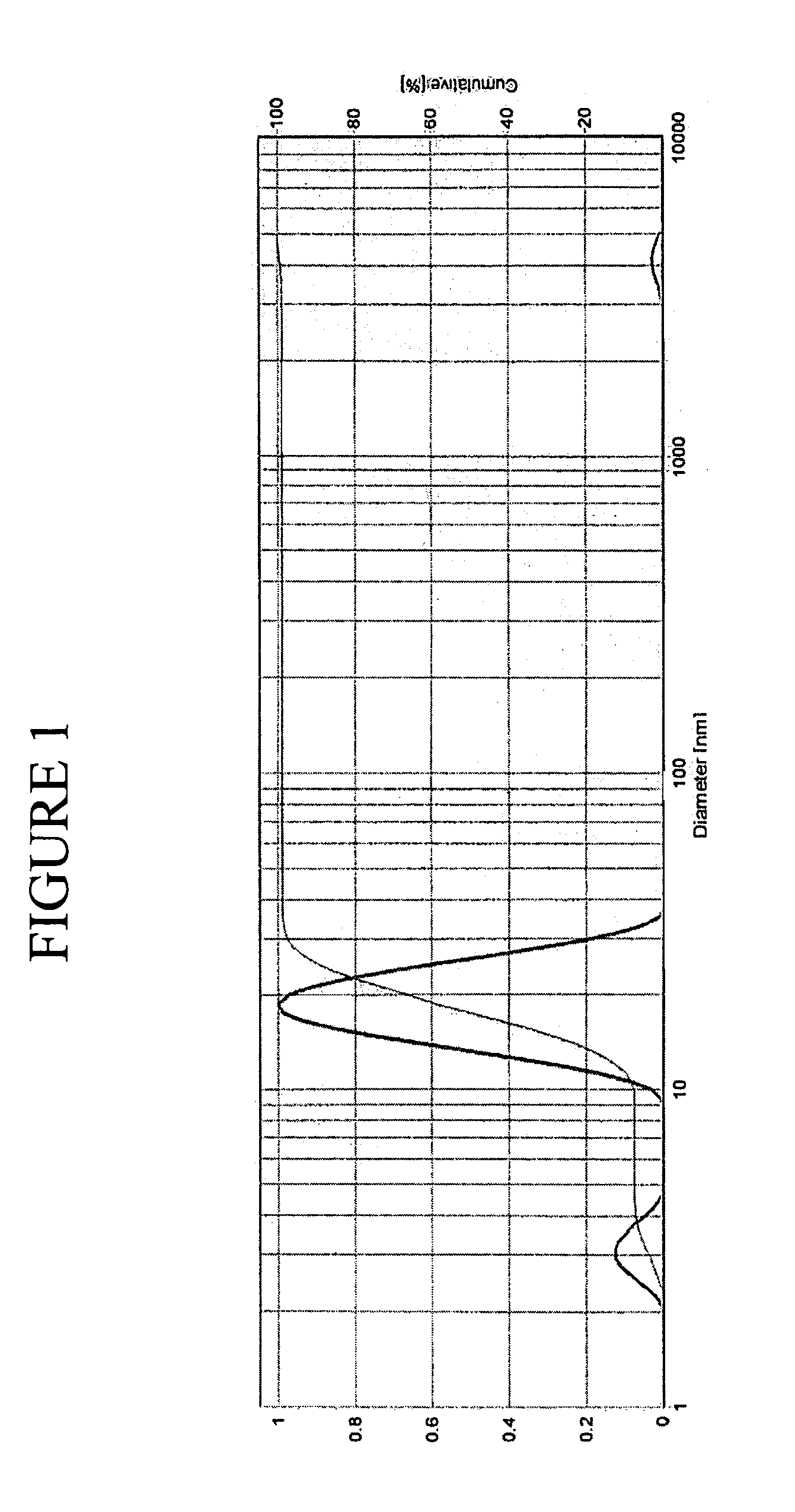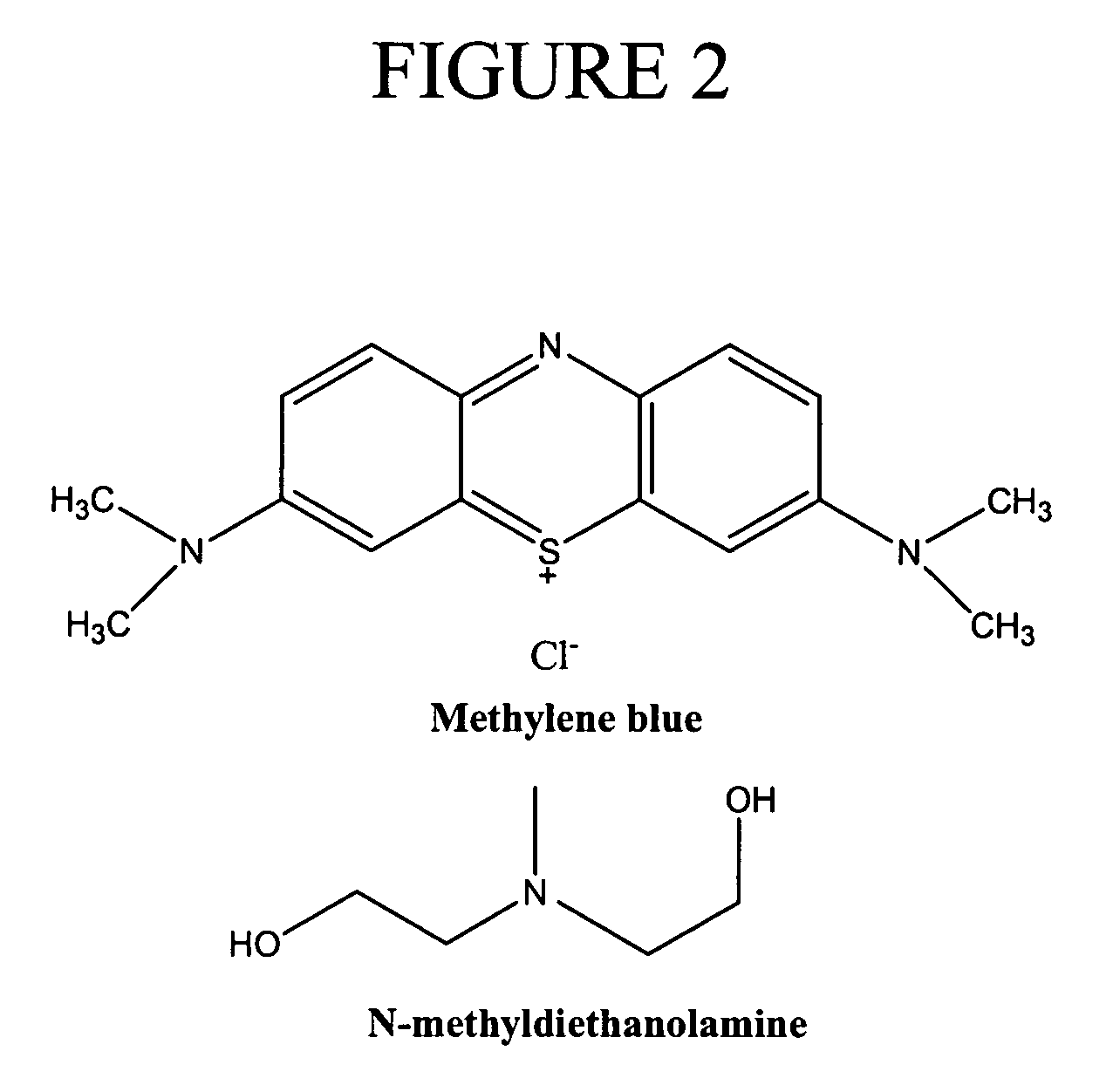Method for producing polymers with controlled molecular weight and end group functionality using photopolymerization in microemulsions
a technology of photopolymerization and end group functionality, which is applied in the field of chain polymerization technique, can solve the problems of limiting the number of polymers that can be formed using this approach, and none of the tools that utilize this approach to predict and regulate the polymer architecture, so as to improve the clarity, resilience, and transparency of the coating. the effect of improving the shine and abrasion resistan
- Summary
- Abstract
- Description
- Claims
- Application Information
AI Technical Summary
Benefits of technology
Problems solved by technology
Method used
Image
Examples
example 1
Microemulsion Based on Butyl Acrylate
[0138]Oil-in-water microemulsions were prepared using butyl acrylate as the monomer, sodium dodecylsulfate as surfactant, and 1-pentanol as co-surfactant.
[0139]A series of experiments were performed with the goal of producing microemulsions containing the maximum amount of oil emulsified in water by using various combinations of surfactants and co-surfactants. In general, pentanol was found to be a more effective co-surfactant than hexanol, and was, therefore, used for most of the studies. Studies were carried out using three families of nonionic surfactants: Triton® (octyl phenoxy poly(ethoxy)ethanol), Tergitol® (alcohols and ethoxylates), and Neodol® (propylene oxide / ethylene oxide copolymer). These surfactants were studied both separately, as well as in combination with one another. The Tergitol® and Triton® were found to be more effective than the Neodol® family.
[0140]Initially, Triton® (EO value 8 and 10) was investigated alone. However, the...
example 2
Polymerization of Butyl Acrylate with a Two-Component Photoinitiator System Containing a Light-Absorbing Molecule and an Electron Donor
[0145]Based upon the criteria for selection of the initiator system described above, a two-component initiator system which produced active centers via photo-induced electron transfer was selected to demonstrate the invention. Specifically, a two-component initiator system consisting of 1) methylene blue (MB) as the light-absorbing molecule and 2) N-methyldiethanolamine (MDEA) as the electron donor was selected. The structures of these compounds are shown in FIG. 2. Methylene blue is a cationically charged dye and was selected 1) because it exhibits a prominent absorption peak centered at 656 nm and 2) because the methylene blue radical formed by electron transfer from the amine was not active for initiation. MDEA has been previously used as an electron donor for two- and three-component initiator systems in bulk polymerizations of organic monomers a...
example 3
Polymerization of Butyl Acrylate with a Hydrogen Abstraction Photoinitiator
[0153]The microemulsion system used in the studies above was selected for these investigations. In this example, monomer-in-water microemulsions were prepared using butyl acrylate as the monomer, sodium dodecylsulfate as surfactant, and 1-pentanol as co-surfactant. The best stability of this microemulsion had come (as discussed above) with SDS which solubilized 17 vol % of monomer into water producing single-phase, room-temperature-stable microemulsions. Dynamic light scattering experiments had yielded a microemulsion droplet diameter of 14.7 nm.
[0154]Based upon the previously described criteria for selection of the hydrogen abstraction photoinitiator, an iodonium salt was selected which produced active centers via photo-induced electron transfer. An example of a hydrogen abstraction photoinitiator that successfully produced polymers was provided when diphenyliodonium chloride was used as the light-absorbing ...
PUM
| Property | Measurement | Unit |
|---|---|---|
| Angle | aaaaa | aaaaa |
| Angle | aaaaa | aaaaa |
| Angle | aaaaa | aaaaa |
Abstract
Description
Claims
Application Information
 Login to View More
Login to View More - R&D
- Intellectual Property
- Life Sciences
- Materials
- Tech Scout
- Unparalleled Data Quality
- Higher Quality Content
- 60% Fewer Hallucinations
Browse by: Latest US Patents, China's latest patents, Technical Efficacy Thesaurus, Application Domain, Technology Topic, Popular Technical Reports.
© 2025 PatSnap. All rights reserved.Legal|Privacy policy|Modern Slavery Act Transparency Statement|Sitemap|About US| Contact US: help@patsnap.com



